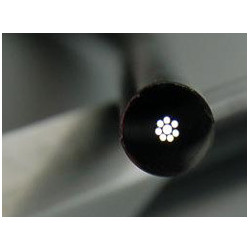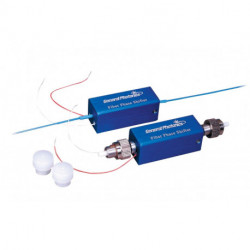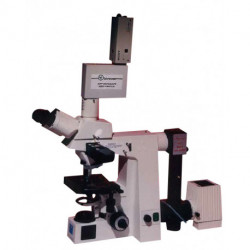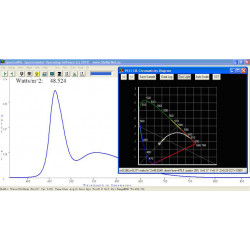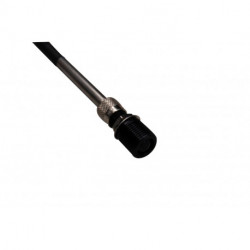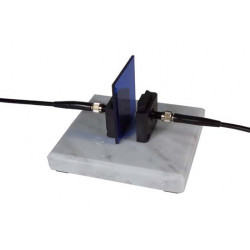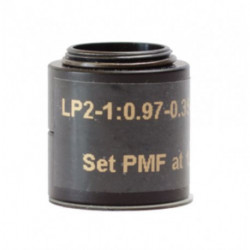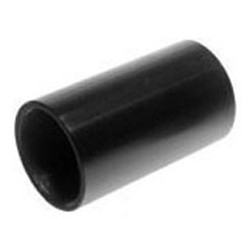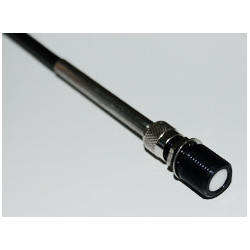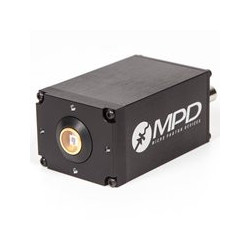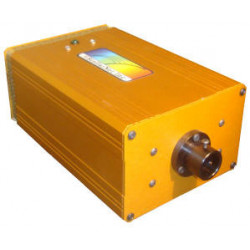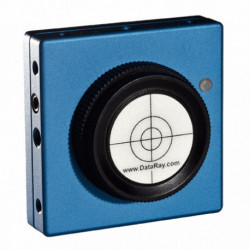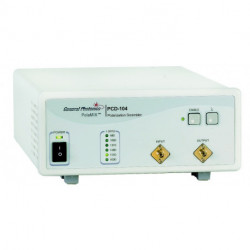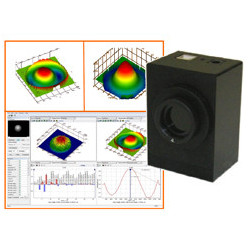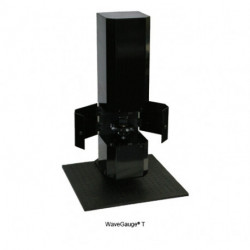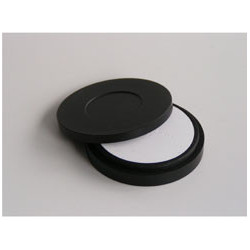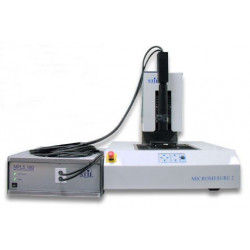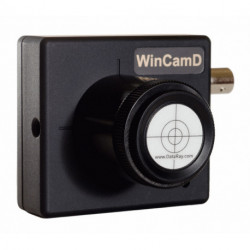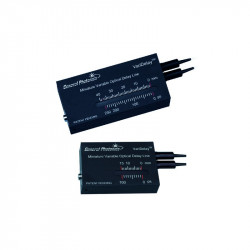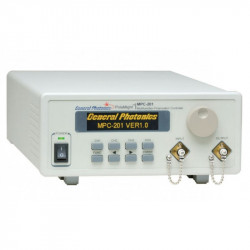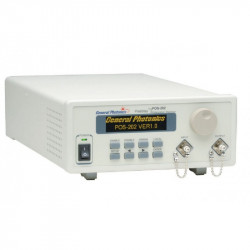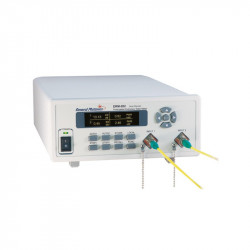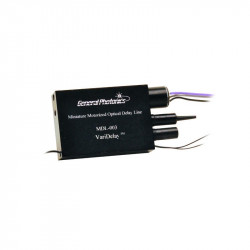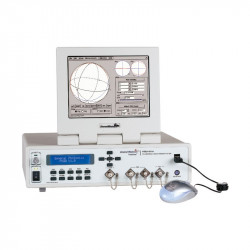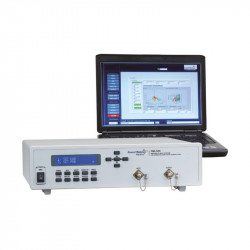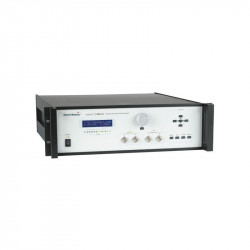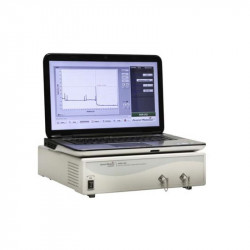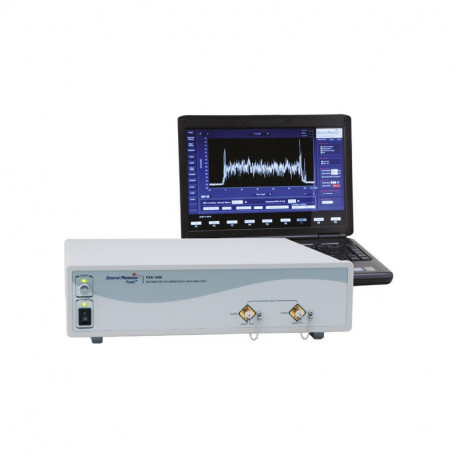 View larger
View larger Distributed Polarization Crosstalk A.
Reference: GPC-PXA-1000
Der GPC-PXA-1000 Distributed Polarisations-Crosstalk Analyzer ist ein Weißlichtinterferometer, welches es ermöglicht, ortsaufgelöste Informationen über die mechanische Belastung einer PM-Faser zu erhalten.
- Send to a friend
- Remove this product from my favorite's list.
- Add this product to my list of favorites.
Product description
GPC-PXA-1100 Distributed Polarisations-Crosstalk Analyzer
The GPC-PXA-1000 is a enhanced version of a white light interferometer designed to obtain space-resolved stress information by analyzing stress-induced polarization cross-coupling along a length of polarization maintaining (PM) fiber.
PolaX's optical design eliminates the strong zero-order interference and reduces the multi-coupling interference common in traditional white light interferometers, both of which can cause "ghost" peaks in the measured signal. The removal of the "ghost" peaks enables PolaX to unambiguously identify the magnitudes and locations of actual x-talk peaks, resulting in higher measurement sensitivity, higher dynamic range, and higher spatial measurement accuracy than traditional white light interferometers.
Applications in sensing
PolaX enables the use of the PM fiber itself as the sensing medium, eliminating the need to place multiple fiber gratings along the fiber. It can obtain higher spatial resolution of the stress distribution compared to grating-based systems. Because no discrete sensing elements are required, the system is easy to install and calibrate, making it ideal for monitoring space-resolved structural changes along bridges, tunnels, dams, oil pipes, or buildings. It can also be used as an intrusion detection system, because any mechanical disturbances to the PM fiber will cause polarization coupling. Another important application is PM fiber quality inspection. PolaX easily identifies defective sections of PM fiber.
PolaX is also ideal for quality inspection and screening of PM fiber coils, since it can pinpoint the locations of imperfections or areas of local stress on the fiber coil induced during the fiber winding process.
PolaX comes with a notebook computer equipped with PolaXViewT software, which displays the location and polarization coupling ratio of each stress point as a function of distance, and flags stress points with polarization coupling above a user defined trigger threshold. A quality inspection report window indicates the pass/fail status of the PM fiber or PM fiber coil, with a list of the locations and polarization coupling strengths of all stress points.
Key Applications:
- distributed stress sensing of PM fiber
- structural change monitoring in bridges, tunnels, dams and buildings
- intrusion detection
- PM fiber and fiber coil quality inspection, fiber coil winding in-process monitoring and quality inspection
- measuring the extremely high polarization extinction ratio of a polarizing waveguide obtaining the autocorrelation function of a light source
- measuring the birefringence of a PM fiber and the lengths of PM and SM fibers; and matching the optical path lengths of an interferometer
Technical Specifications
| Operation wavelengths | 1310 or 1550nm |
| Polarization X-talk dynamic range | 75 dB (for DUT output power >5dBm) |
| Polarization X-talk sensitivity | -95 dB |
| Polarization X-talk resolution | 0.25 dB |
| Polarization X-talk accuracy | 0.5 dB |
| Measurement or sensing range (assuming PM fiber ?n of 5x10-4) | 1.3 km standard, 2.6 km optional |
| Measurement speed | 8s/100m (with PM fiber ?n of 5x10-4) |
| Spatial resolution | 5cm (assuming no fiber dispersion, birefringence ?n=5x10-4) |
| PER measurement range | >30 dB |
| Spatial accuracy | ±20 cm (with fiber ?n=5x10-4) |
| Waveguide polarization dependent attenuation | >75dB (for DUT output power >5dBm) |
| LiNbO3 waveguide spatial resolution | 0.75 mm |
| SLD power | > 10 dBm |
| SLD bandwidth | >30 nm |
| SLD PER | >20 dB |
| Software | PolaXViewT data analysis/display software |
| Operating Temperature | 10 to 50° C |
| Storage temperature | -20 to 60° C |
| Communications interface | USB |
| Display | Notebook computer with USB connection |
| Dimensions | 2U, ¾ 19" rack width, 3.5"(H) x 14"(W) x 14"(D) |



 Distributed Polarization Crosstalk A.
Distributed Polarization Crosstalk A.